Physical Address
304 North Cardinal St.
Dorchester Center, MA 02124
Surgical prosthetic voice restoration is the best option and gold standard for reestablishing oral communication in laryngectomized individuals.
Surgical prosthetic voice restoration is feasible in all patients who are healthy enough to tolerate total laryngectomy and motivated to regain optimal oral communication.
Surgical prosthetic voice restoration requires a multidisciplinary team approach including physician, speech therapist, and oncology nurse for achieving optimal results.
In case stable prosthetic voice deteriorates, prompt clinical consultation is mandatory to solve the problem short term and to treat the underlying cause (comorbidity/reflux) long term.
Adverse events in prosthetic voice restoration are mostly relatively minor and directly solvable by a trained physician, speech therapist, or oncology nurse.
Reconstruction of the pharynx, such as with free revascularized or pedicled flaps, does not preclude surgical prosthetic voice restoration.
For pulmonary rehabilitation, a heat and moisture exchanger compensates to a great extent for the short-circuited upper respiratory tract function and improves voice quality.
For olfaction rehabilitation, the nasal airflow-inducing maneuver is capable of restoring the sense of smell in the vast majority of total laryngectomy patients.
The first attempts at postlaryngectomy voice rehabilitation were surgical and prosthetic. Voice restoration in the first patient who underwent total laryngectomy (TL) for cancer, a procedure carried out by Billroth in 1873, was achieved by applying a so-called artificial larynx. As so eloquently described by Billroth's fellow, Gussenbauer, the patient could be understood from one end of the ward to the other. Considering that patient wards in those days were huge and held up to 40 beds, this must have been an impressive performance. This first voicing device, essentially a tracheotomy tube with a pharyngeal extension ( Fig. 111.1 ), allowed pulmonary-driven speech. It contained a valve mechanism to prevent aspiration, a special membrane to act as a heat and moisture exchanger (HME), a reed to act as a vibrating tone generator, and a metal lid on the pharyngeal cannula to serve as a pseudo-epiglottis for aspiration prevention. This artificial larynx did not gain much popularity, however. The main reasons for abandoning this and similar devices in those early decades were the many wound-healing complications in an era without proper anesthesia and antibiotics. The discovery by Gluck and Sörensen that closing the pharynx significantly decreased postoperative morbidity and mortality and increased long-term survival undoubtedly lowered the interest in surgical voice restoration for many decades. Another reason for this was the discovery of esophageal speech—that is, that the expulsion of air from the esophagus causes mucosal vibrations, which thus enables the pharynx to act as the substitute tone generator.
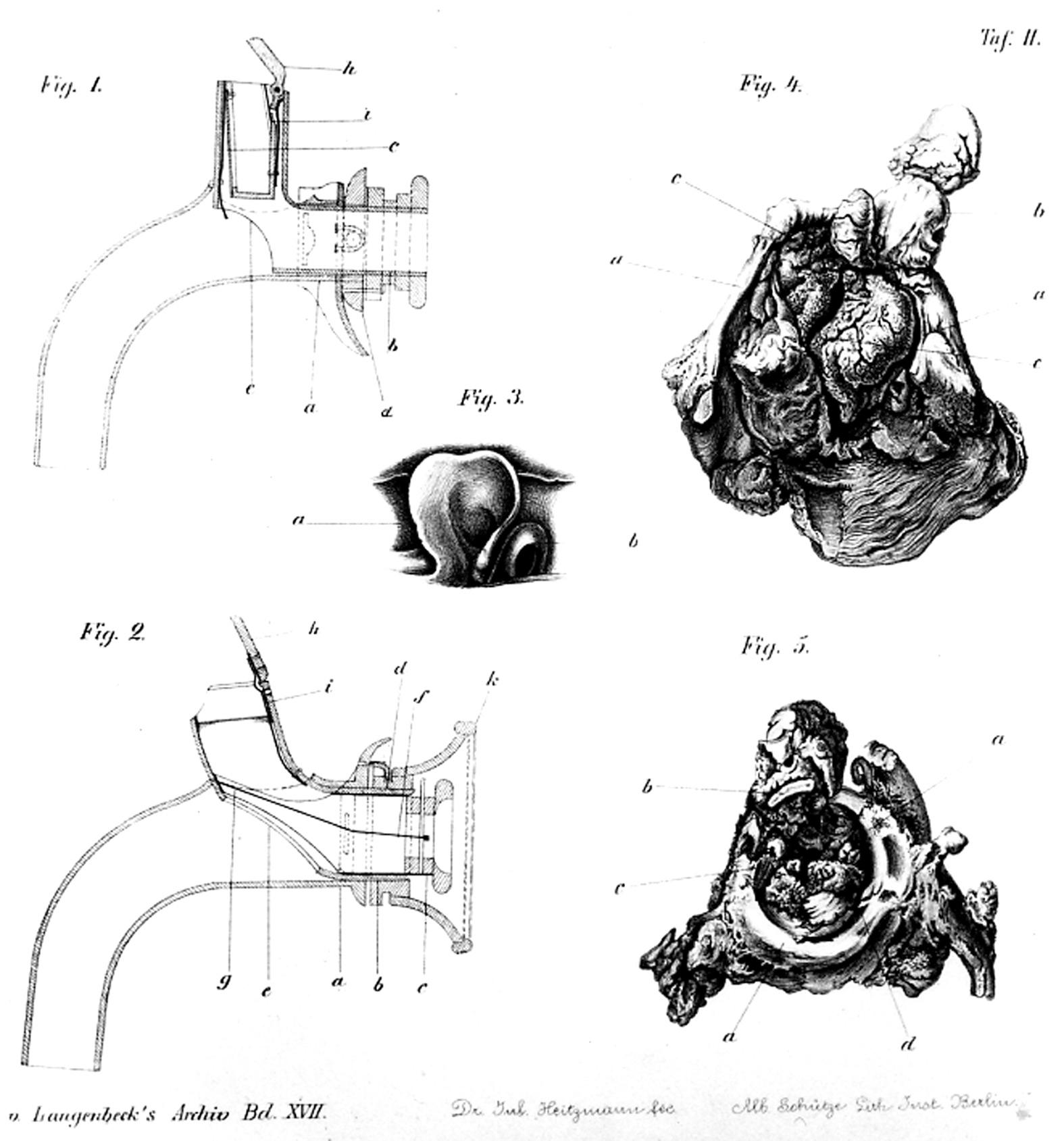
Over the past four decades, voice rehabilitation after TL has shown considerable changes. Until the late 1970s, only three options were available for audible postlaryngectomy voicing: (1) esophageal voice, (2) electrolarynx voice, and (3) voicing through a surgical shunt between the trachea and the pharynx. Besides that, there were the barely audible, but sometimes still quite intelligible, options of buccal and whispered voicing.
In the late 1970s and early 1980s, surgical procedures—such as those described by Asai, Amatsu, and Staffieri —to create a functional tracheoesophageal (TE) shunt to allow TE voicing were initially popular but have since declined. After the first positive reports about the favorable voice quality these techniques enabled, many head and neck specialists became disappointed by the troublesome aspiration problems in many patients. In essence, it turned out that if the voice was good, aspiration of fluids was also apparent; when there was no aspiration, the voice was absent or at least quite strained. In the 1990s, surgical methods were revisited, which was mainly attributable to the growing popularity of microvascular surgery. Especially in Germany, the siphon technics by Ehrenberger und Remmert, the laryngoplasty by Hagen, and the pectoralis major flap method by Maier and Weidauer obviously had success in the hands of their developers, but did not receive widespread acceptance. Therefore, these surgical shunt techniques were more or less abandoned in many countries, whereas in others, these experiences initiated a quest for solving the aspiration problem.
The solution for the aspiration problems was found in the development of the now widely applied voice prostheses (VPs), which all use a surgically created TE shunt and contain a one-way valve mechanism. These prostheses keep the tracheoesophageal puncture (TEP) tract open to allow the passage of pulmonary air into the esophagus for producing pharyngeal vibrations and thus sound. Aspiration is prevented through automatic closure of the valve when the pulmonary air pressure drops. Meanwhile, these devices have proven to be both functional and reliable.
Some historic reflections are noteworthy. Although Singer and Blom have been credited as being the initiators of the modern VPs, the first paper on a useful prosthetic device ( Fig. 111.2 ) actually originated from Poland, where in 1972 Mozolewski had already published his results on 24 patients. Regrettably, this publication in Polish with an abstract in Russian and English received little attention. However, Mozolewski and colleagues continued working on surgical prosthetic voice rehabilitation, and in 1975 they published an arytenoid vocal shunt procedure in the Laryngoscope as an alternative to the popular Asai procedure. Subsequently, they presented both surgical and prosthetic methods at a conference in Buffalo, New York, in May of 1978. After these initial reports, Blom and Singer put prosthetic voice rehabilitation on the world map and diligently and tenaciously instructed and educated numerous clinicians. Since the introduction of the first Blom-Singer device in 1980, comparable one-way valve VPs were developed, such as the Panje, Groningen, Herrmann, Traissac, Algaba, Provox, Nijdam, and VoiceMaster prostheses, several of which are still in use today.
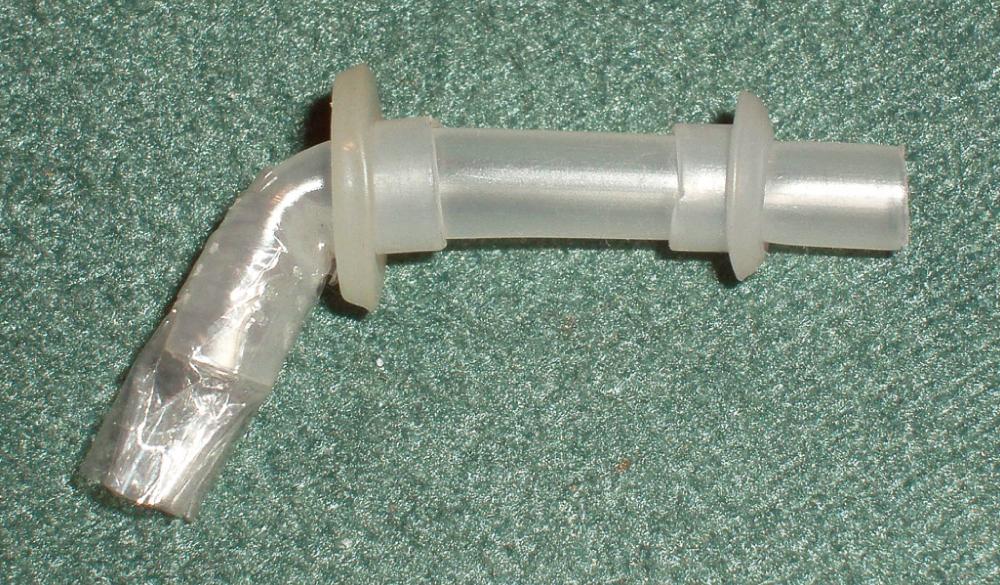
For a good understanding of voice and speech rehabilitation after TL, the basic principles of normal laryngeal voice and speech production should be understood. Speaking requires an air supply/bellows, a sound generator, and a resonating cavity in which the sound is transformed into intelligible speech. Typically, the air supplied by pulmonary exhalation causes mucosal vibrations in the sound generator/larynx through the Bernoulli effect. The sound thus produced is transformed into intelligible speech by the resonators and articulators in the vocal tract—the mouth, nose, and throat cavities and the musculature in and around those spaces; the three components of voice and speech production are schematically shown in Fig. 111.3 . After TL, the vocal tract is more or less unchanged, although the removal of the hyoid bone and larynx may alter the position of the tongue base, which can influence speech intelligibility, for example, through a decrease in voiced-voiceless distinction. The most obvious change, however, is the replacement of the larynx by the pharyngoesophageal (PE) segment as new substitute sound generator, which has a major impact on voice quality.
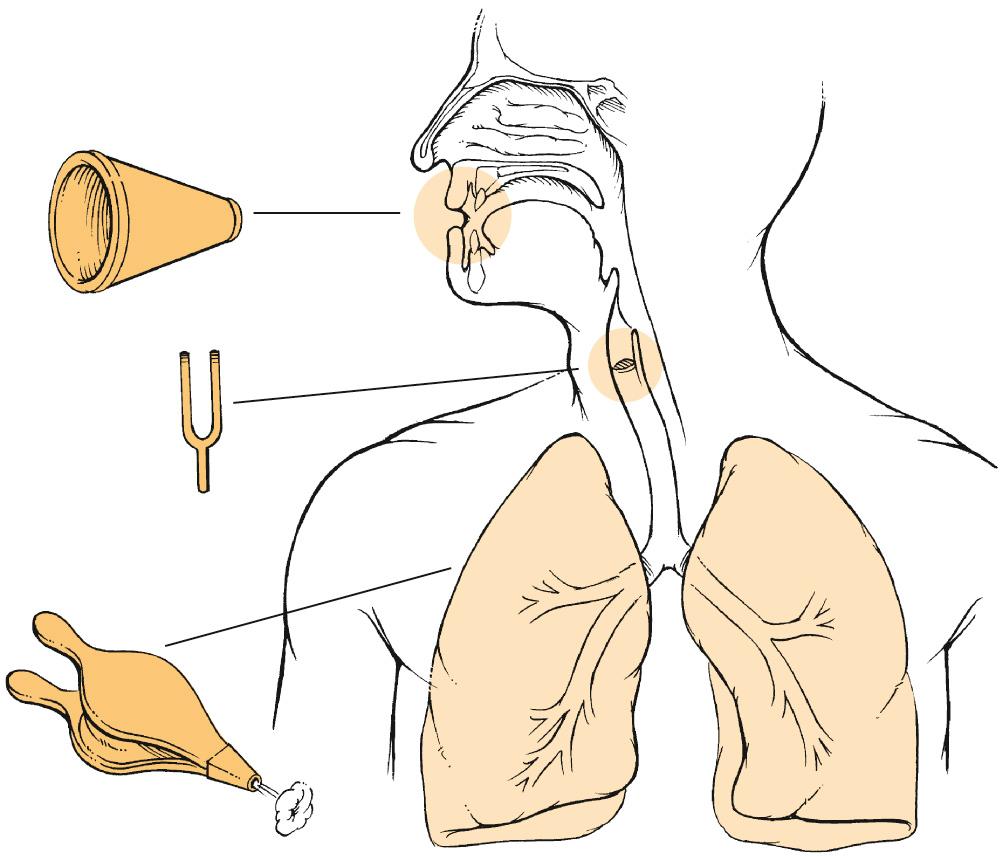
One option for substitute air supply after the disconnection of the upper and lower airways is air injected into the esophagus and/or stomach. By ejecting this air again, the mucosa in the PE segment can be set into vibration. With the sound thus produced, as already mentioned, intelligible speech can be created in the vocal tract. This so-called esophageal speech is schematically depicted in Fig. 111.4 . One drawback of this method is that the volume of air is limited to 60 to 80 mL, in contrast to the liters of pulmonary air available before the operation. Therefore, phonation time (1 to 2 seconds) is short compared with more than 20 seconds in laryngeal voicing. Further drawbacks are that this technique is often difficult to acquire, and often takes many months to develop useful speech, if any. Success rates in the literature vary substantially, partly because of the lack of a good definition of voice quality. No more than 40% to 60% of the patients acquire reasonable speech, and only 10% develop a really good voice.
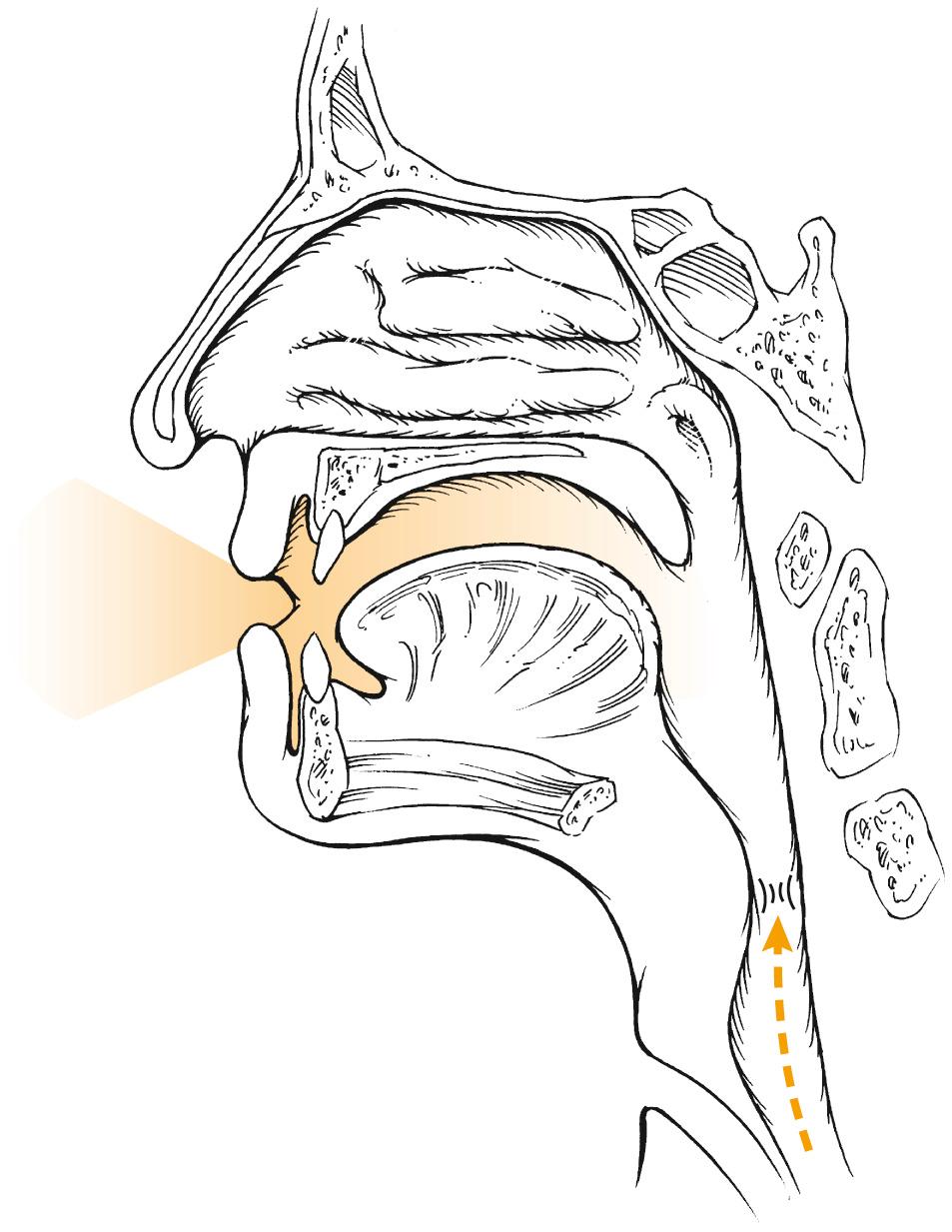
Another option is to use a tone generator, which nowadays mostly consists of an electrically driven instrument called an electrolarynx . This device generates vibrations that will be passed through the skin toward the throat; this is schematically depicted in Fig. 111.5 . The sound generated in this way is converted in the vocal tract into intelligible speech. The advantage is that most patients acquire this speech quite rapidly, but the monotonous, robot-like voice and the continuous occupation of one hand when speaking remain significant drawbacks.
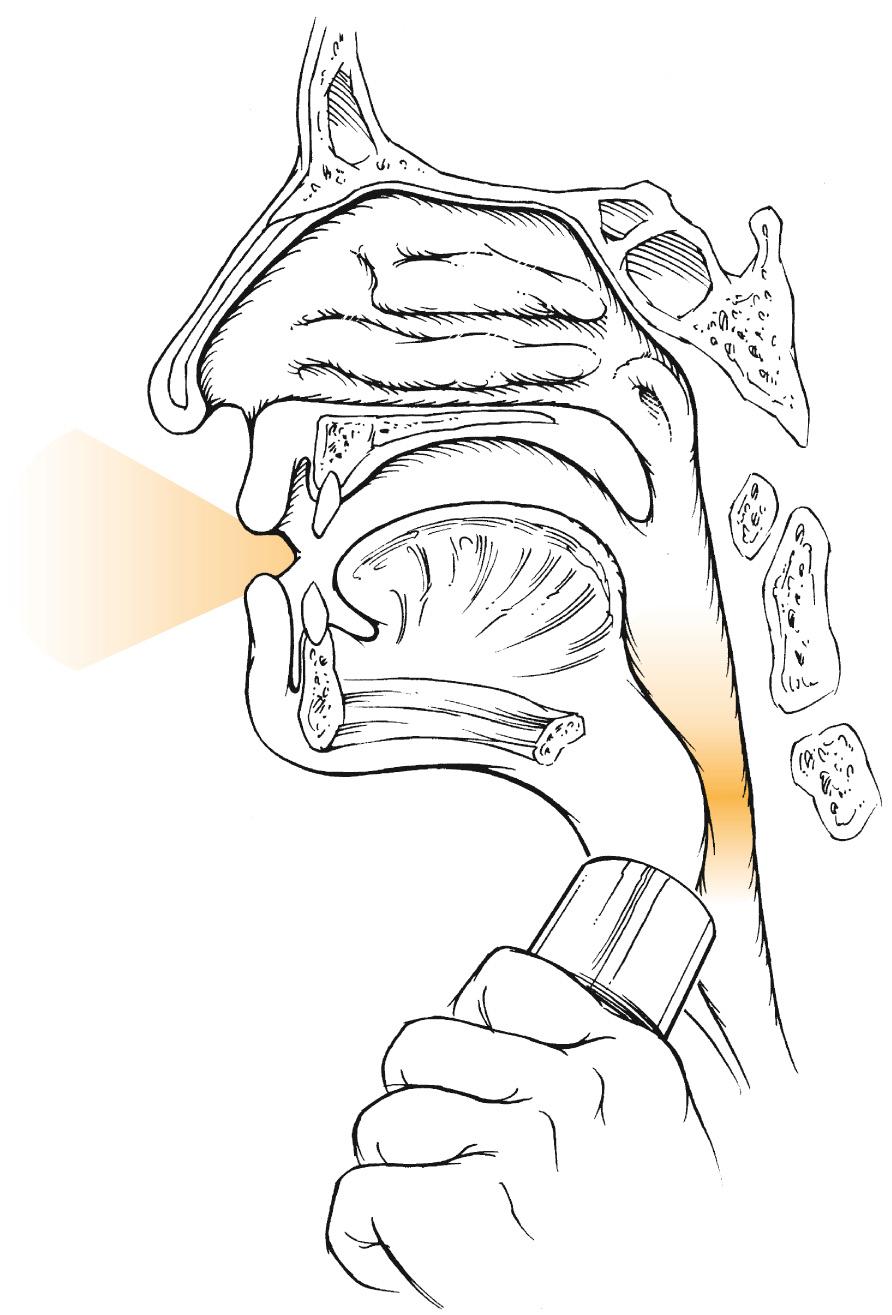
The previously outlined limitations of esophageal and electrolarynx speech subsequently led to the development of VPs, which through a one-way valve reestablishes the flow of pulmonary air into the new sound generator, that is, the PE segment. Through a minor surgical procedure, either primarily at the time of the laryngectomy or secondarily at a later date, a TEP shunt is created to allow the implantation of these devices. After closure of the stoma, pulmonary air can set the sound generator—in this case, the mucosa in the pharynx—into vibration ( Fig. 111.6 ). Even after extensive resections and reconstructions of the pharynx, this method is applicable, whereas esophageal speech in these cases is hardly ever successful. The recovery of oral communication is so rapid (in most cases a useful voice develops within 2 weeks) and the success rate of the prosthetic method is so high (around 90%) that this rehabilitation technique has become the gold standard, and made recovery of speech after TL quite predictable.
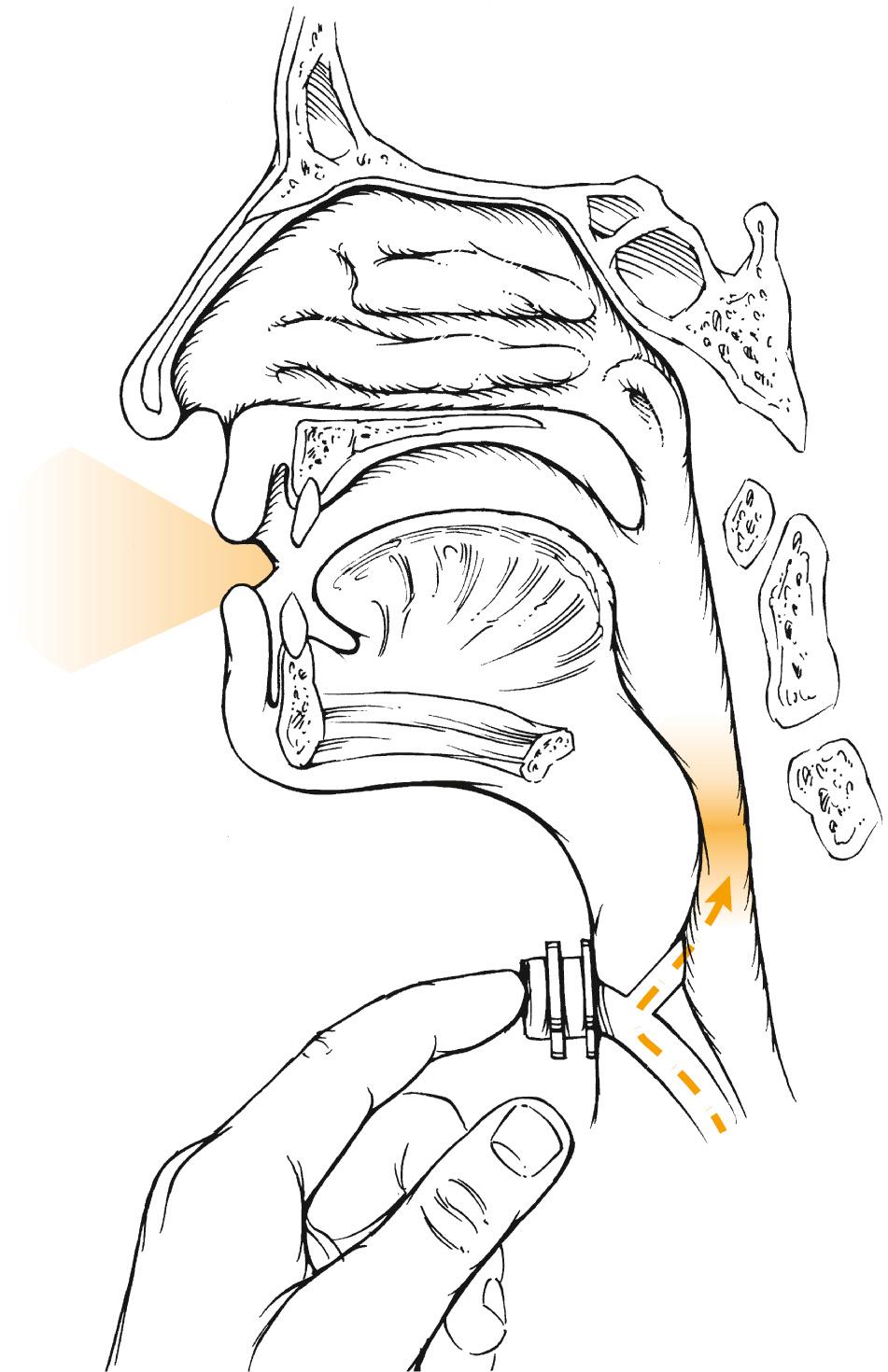
TE speech is pulmonary driven and thus closest to normal laryngeal speech (an example is given in ). The availability of pulmonary air allows many patients to achieve maximum phonation times that approach normal values; mean maximum phonation times of 16 to 17 seconds are no exception. Even in most patients with chronic obstructive pulmonary disease, pulmonary capacity is still sufficient to allow for good voicing. As already mentioned, the sound is produced in the PE segment by mucosal vibrations generated by the pulmonary air. An important issue to stress at this point is that there is no gender difference in postlaryngectomy anatomy and physiology of the new sound source. This means that male and female voices do not differ in fundamental frequency, which is mostly somewhere around 100 Hz. Thus, female voices often sound too low, whereas male voices are fine in this respect. This is one of the remaining issues to address in the future. Although it may sound like a superfluous remark, it must be kept in mind that the pharynx also constitutes the alimentary tract, so after laryngectomy, the PE segment has a dual function as sound generator and food passage. This always should be kept in mind when problems occur with VPs, and when solutions are searched for: what could be beneficial to one function might be detrimental to the other one.
VPs can be either nonindwelling or indwelling. In the United States, the first VPs were nonindwelling (Blom-Singer duckbill and low-resistance VP and Panje), whereas the first VP in Europe was indwelling (Groningen button) ( Fig. 111.7 ).
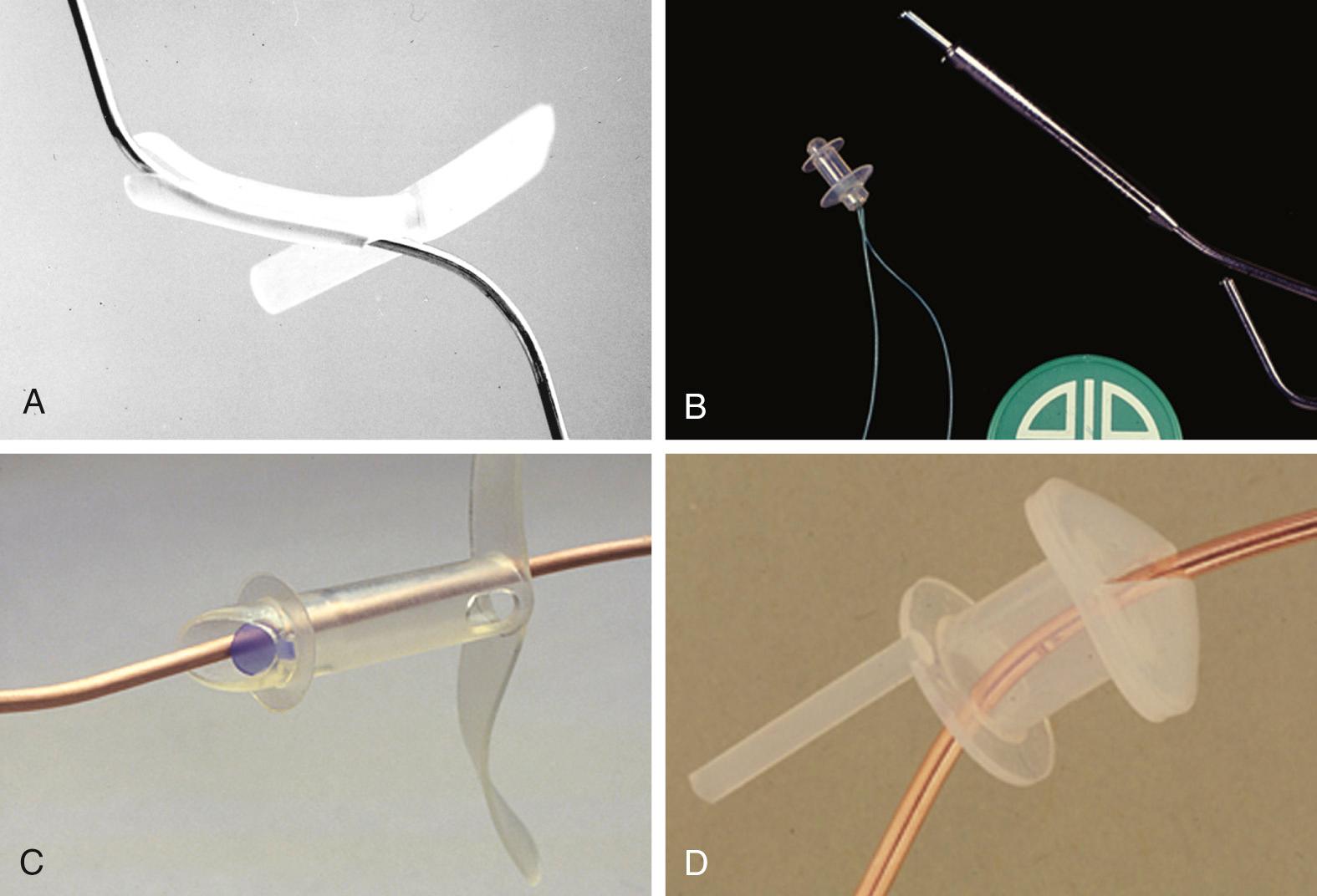
Nonindwelling VPs can be self-removed and -replaced by the patient, whereas indwelling VPs have to be removed and replaced by a trained clinician. VPs require replacement when the one-way valve starts to dysfunction—there is either leakage of fluids through the device/aspiration, or impaired speech due to increased airflow resistance/crusting. Since indwelling devices may have a more robust construction, their device life generally is longer than that of nonindwelling types. Furthermore, indwelling devices have the distinct advantage that the patient's dexterity plays a lesser role in daily maintenance. Maintenance mainly consists of internal cleaning with a brush and/or a flushing device without the need to regularly replace the prosthesis. Even with increasing age and/or decreasing general health status, a useful (prosthetic) voice can be preserved. The obvious disadvantage of indwelling VPs is that for replacement patients need a trained clinician and that hospital or clinic visits remain necessary. However, nonindwelling devices also often require patients to regularly consult their clinician. An inadvertent dislodgment of the device and aspiration into the trachea can be a concern, which in an Australian series was experienced occasionally by 20% of patients. Furthermore, as with indwelling devices, a regular checkup of the TEP/stoma region is necessary because of the need for early detection of possible adverse side effects—such as hypertrophy, infection, and widening of the TE tract—and for oncologic follow-up, irrespective of the prosthesis used. Therefore, in most of Europe, from the beginning indwelling devices were favored. Examples of one of the commonly used indwelling VP are shown in Figs. 111.8, 111.9A and B, and 111.10 and animations of the replacement methods in through , respectively.
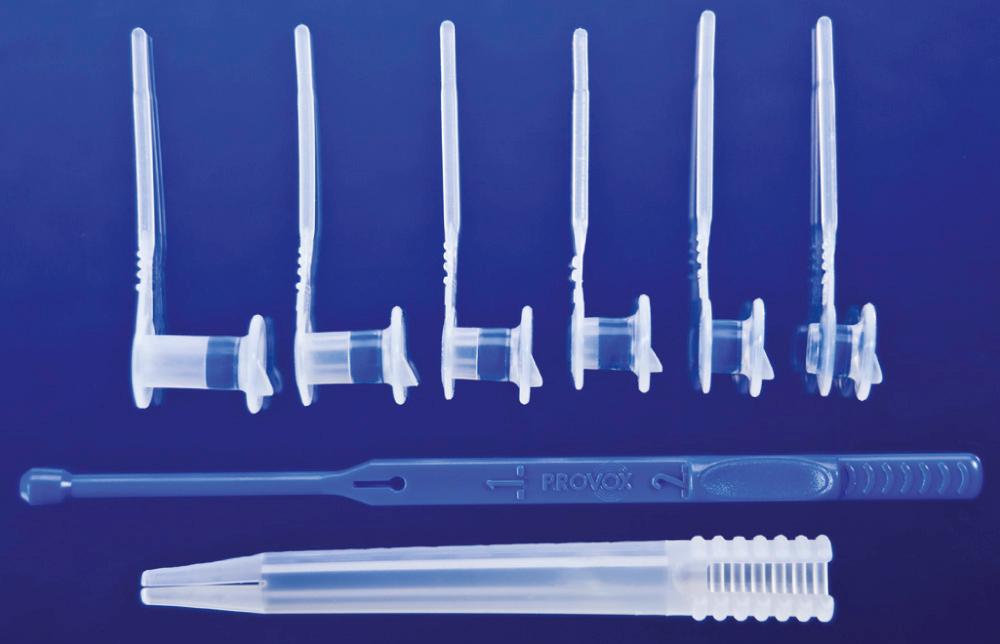
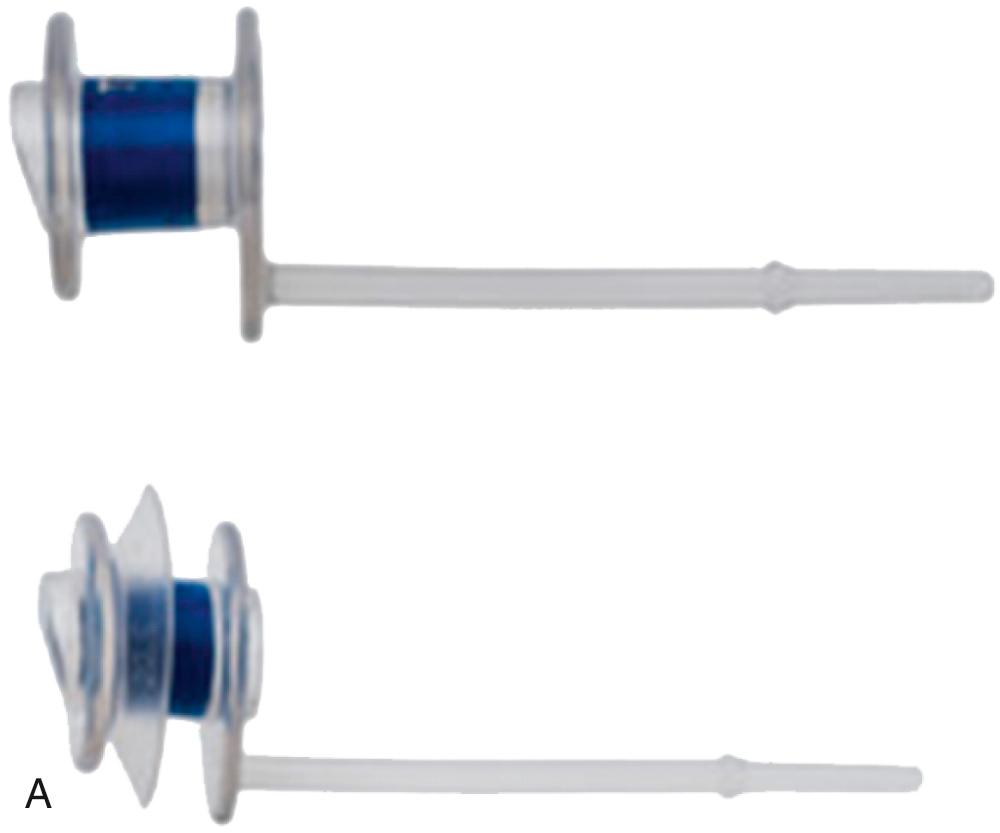
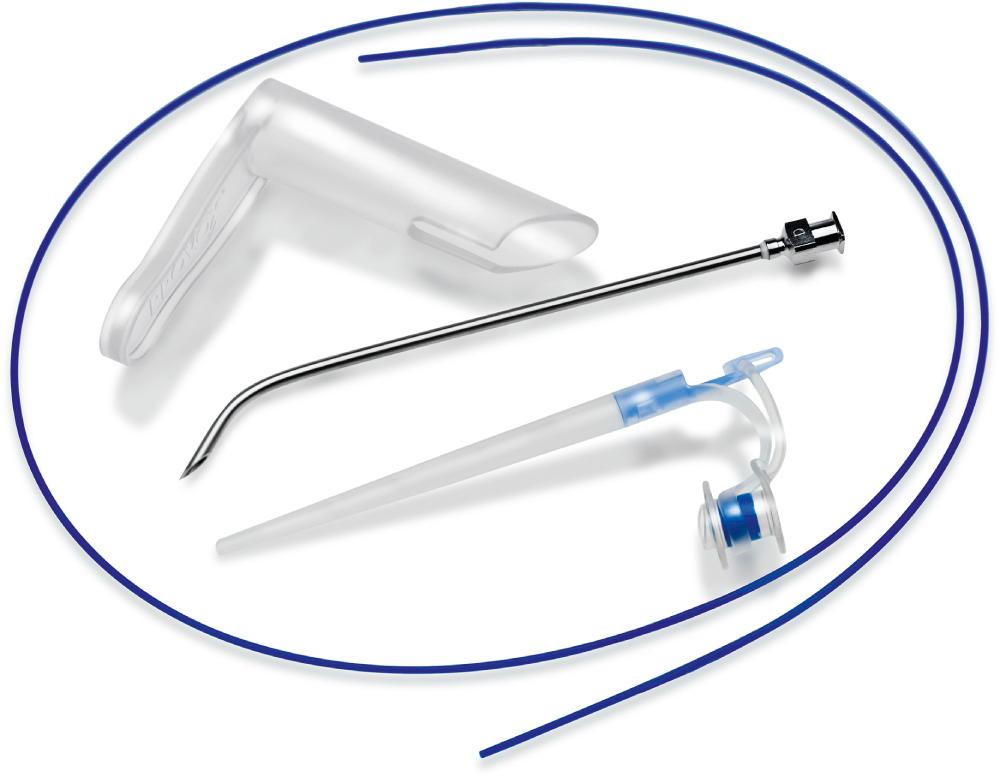
Evolution of voice prosthetics in the United States has been driven more by the specialty of speech-language pathology (SLP), whereas in Europe, it is more often handled by the head and neck specialty in collaboration with the SLP. In the United States, the preference has been to insert a rubber catheter to act as a stent and delay the insertion of the prosthesis until wound healing is completed. The disadvantage of this approach is that the catheter can irritate the TEP tract, which can result in edema and elongation of the tract. This usually necessitates the use of a longer VP when fitted after some 10 days. Subsequently, repeated downsizing of the VP within the first few months after the procedure is usually required as the edema resolves. In contrast, when the VP is fitted immediately with the TEP, as was originally described for the indwelling Groningen prosthesis, a second fitting can be avoided, and the palpated estimate of the length of the prosthesis is more accurate, being almost always 8 mm. An argument used to favor inserting a (feeding) catheter through the TEP at the time of the laryngectomy is that the neopharynx and nasal cavity remain free of an irritating tube. However, whereas the insertion of the VP during the postoperative phase may be difficult for some patients, the majority tolerate this quite well. Usually, the patient is able to resume oral intake when the tube is removed 10 to 12 days later for placement of the prosthesis. For patients who were treated previously with radiation therapy, this length of time for tube feeding is preferred. The alternate approach of fitting the prosthesis immediately at the time of the laryngectomy, as described earlier, has been reported to be quite satisfactory with a low complication rate, which also was recently confirmed for the Blom-Singer indwelling VP. Additionally, consideration should be given to the psychological advantage for patients to start voicing immediately after removal of the feeding tube. The recent trend by some centers to start oral intake, but not voicing, very soon after the laryngectomy in nonirradiated patients, even as soon as 24 to 48 hours, matches well with the early fitting philosophy. It is therefore not surprising that the immediate insertion method is gaining popularity in the United States, still leaving the SLPs as the leading clinicians responsible for the rehabilitation of postlaryngectomy voice and speech rehabilitation.
As with any other surgical technique and prosthetic appliance, problems and complications must be taken into account. Proper handling of the occasional problems is mandatory in order to maintain oral communication for the rest of the laryngectomy patient's life. Because the prognosis for many laryngectomized individuals is quite good, many of them have a long enough life expectancy; therefore, it is necessary for medical professionals to provide care specific for communication over the long term. Hence, implementing a comprehensive protocol for optimal managing of adverse events is very much worthwhile for all involved—patients and clinicians .
For the indications and the surgical aspects of TL, see Chapter 109 . In the following paragraphs, some specific aspects of surgical prosthetic voice rehabilitation are discussed.
Primary prosthetic voice restoration is presently the method of choice for reestablishing postlaryngectomy oral communication. Primary prosthetic voice restoration, that is, TEP and immediate VP insertion at the time of TL, is presently preferred by many experienced medical professionals. With a disposable Seldinger-type TEP instrument, the procedure has become even easier and less traumatic ( ). This approach enables easy, comfortable voice restoration, because the patient is still under general anesthesia when the first VP is inserted, stenting of the TEP tract with a nasogastric feeding tube is not needed because the device itself is stabilizing the tract, and a secondary procedure at a later date is not necessary anymore.
The TEP almost always can be done as a primary procedure, even when the circumference of the neopharynx must be reconstructed, provided the esophagus is still intact at the level of the trachea. Only when the proximal esophagus is dissected off the trachea, as in a gastric pull-up procedure, is there a need to delay the TEP for 4 to 5 weeks. In those cases, secondary TEP with immediate VP fitting is performed after the completion of wound healing and prior to possible postoperative radiotherapy (see also the discussion of the role of radiotherapy in the later “Prosthetic Voice Rehabilitation and Radiotherapy” section).
With the currently available devices, if available and affordable, VPs can be applied, irrespective of the preferred method of closure of the pharyngeal mucosa and the extent of the pharyngeal constrictor muscle defect. However, with a few refinements in the surgery at the completion of the TL, several postlaryngectomy problems can be avoided or diminished, such as hypertonicity of the PE segment and a poor contour of the stoma.
Refinements of standard TL techniques for optimizing prosthetic voice restoration results include (1) a short myotomy of the upper esophageal sphincter to prevent hypertonicity of the PE segment, (2) suturing of the trachea in a separate fenestra in the inferior skin flap to create a stable stoma, (3) sectioning of the sternal heads of the sternocleidomastoid (SCM) muscles to prevent a “deep” stoma, and (4) pharyngeal mucosa closure without tension ( T -shape) to prevent pseudovallecula formation.
Hypertonicity of the PE segment is the most frequent reason for failure to develop fluent prosthetic or esophageal speech. The cause is excess tonicity in the constrictor pharyngeus muscles that form the wall of the PE segment. In patients with this problem, this tonicity is increased after inflation of air, and this blocks the flow of air through the PE segment, preventing mucosal vibrations and thus sound production. Although several surgical solutions are described in the literature, we believe the best option to prevent this problem is to perform a short anteriorly positioned myotomy of the circular proximal upper esophageal sphincter (cricopharyngeus) muscle in every patient ( Fig. 111.11 and ), unless palpation during surgery reveals that this muscle is completely relaxed. After this myotomy and prosthesis insertion, the surgeon can still close the pharynx (mucosa and constrictor muscles) in the preferred manner.
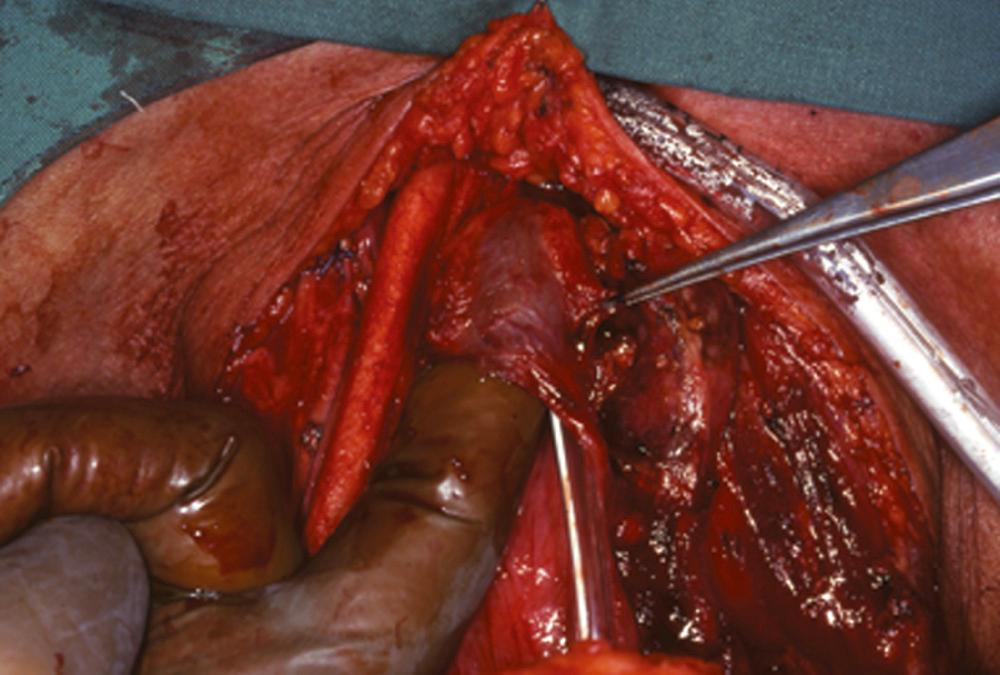
Ideally, the patient will have a stable stoma with the same diameter as the trachea, or only slightly narrower, in order to have easy access to the VP and to obviate the need to stent the stoma with a cannula for adequate breathing. Reasons for stoma stenosis can be a dehiscence of the trachea from the skin because of infection and/or traction; not leaving the final tracheal cartilage “ring” for the stoma intact, which diminishes its internal stability; or retraction of the tracheocutaneous sutures. A reliable technique is to suture the trachea into a separate fenestra in the lower skin flap ( Fig. 111.12 ). This fenestra should have approximately the same size and diameter as the trachea, and the cranial trachea ring should be kept intact. This latter aspect is the most important point for creating a stable stoma: the collagen fibers in the trachea cartilage are distributed in such a manner—dense and parallel on the outside and loose and intermingled on the inside—that the cartilage acts as a “spring” keeping the trachea open. If the cartilage is incised, these spring forces are lost, and the trachea will collapse, which results in a smaller stoma. Meticulous suturing of the skin to the tracheal mucosa and optimally covering the bare tracheal cartilage is important to prevent local infection and fibrosis. The small strip of skin cranially (8 to 10 mm) is surprisingly vital and only rarely breaks down, even in irradiated patients. The advantage of this technique is that trifurcations in the wound are avoided, which is not the case if the stoma is fashioned in the modified Gluck-Sörensen incision. Obviously, in some cases in which the trachea has to be sectioned lower down, the trachea might not be long enough to be sutured in a separate fenestra, and the entire inferior skin flap is needed to be able to form a stoma. But even in these cases, with an intact last trachea “ring,” it should be possible to decannulate the patient shortly after the procedure. The absence of a cannula results in less irritation of the trachea and stoma, less coughing and strain, and improved wound healing.

A deep stoma is problematic for the later application of additional rehabilitation devices that rely on peristomal attachment, such as HMEs or automatic speaking valves (ASVs). Sometimes a deep stoma is unavoidable, such as is the case when more than four tracheal cartilages are removed. However, most deep stomas are caused by the protrusion of the sternal heads of the SCM muscles. This can be prevented by cutting the sternal attachment of the SCM at the end of the operation prior to skin closure ( Fig. 111.13 and ). This generally results in a flat peristomal area, making attachment of external devices considerably easier. Functional side effects from the resected SCM have not been observed.
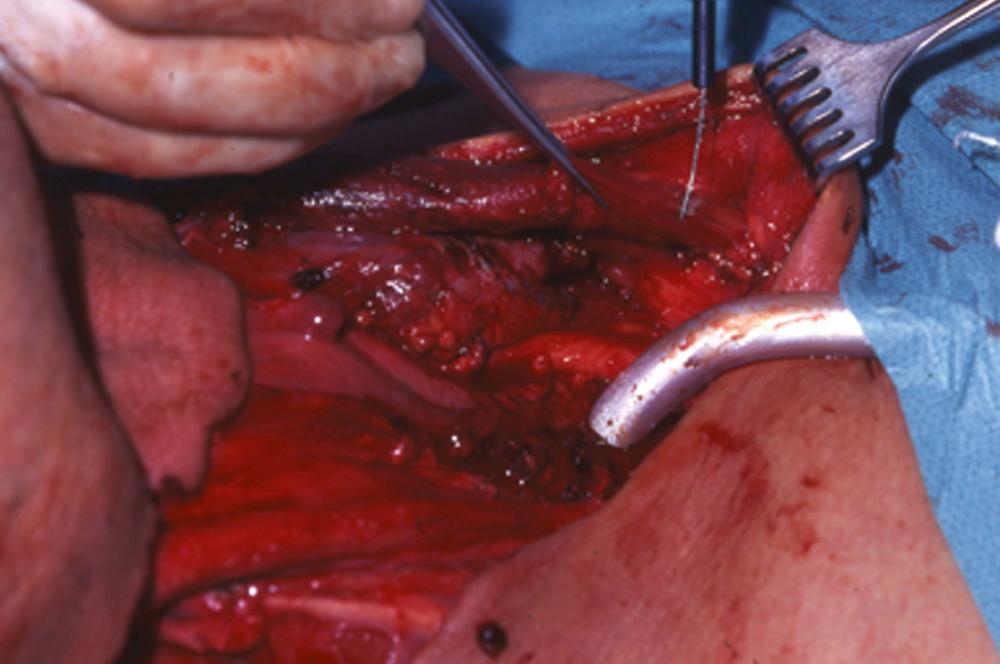
Meticulous closure of the pharyngeal mucosa is imperative to avoid wound healing problems. Importantly, any undue tension on the suture line should be avoided. This means that purely vertical or horizontal closure of the pharyngeal defect is seldom possible. To avoid undue tension, the closure should be T-shaped, with a variable length of the horizontal and vertical bar of the “T” ( Fig. 111.14 ). If the trifurcation is reinforced with an extra submucosal stitch, fistula formation is not increased. Most experts agree that this closure also avoids pseudo-vallecula formation, something that seems to occur more frequently when a pure vertical closure is used as a standard.
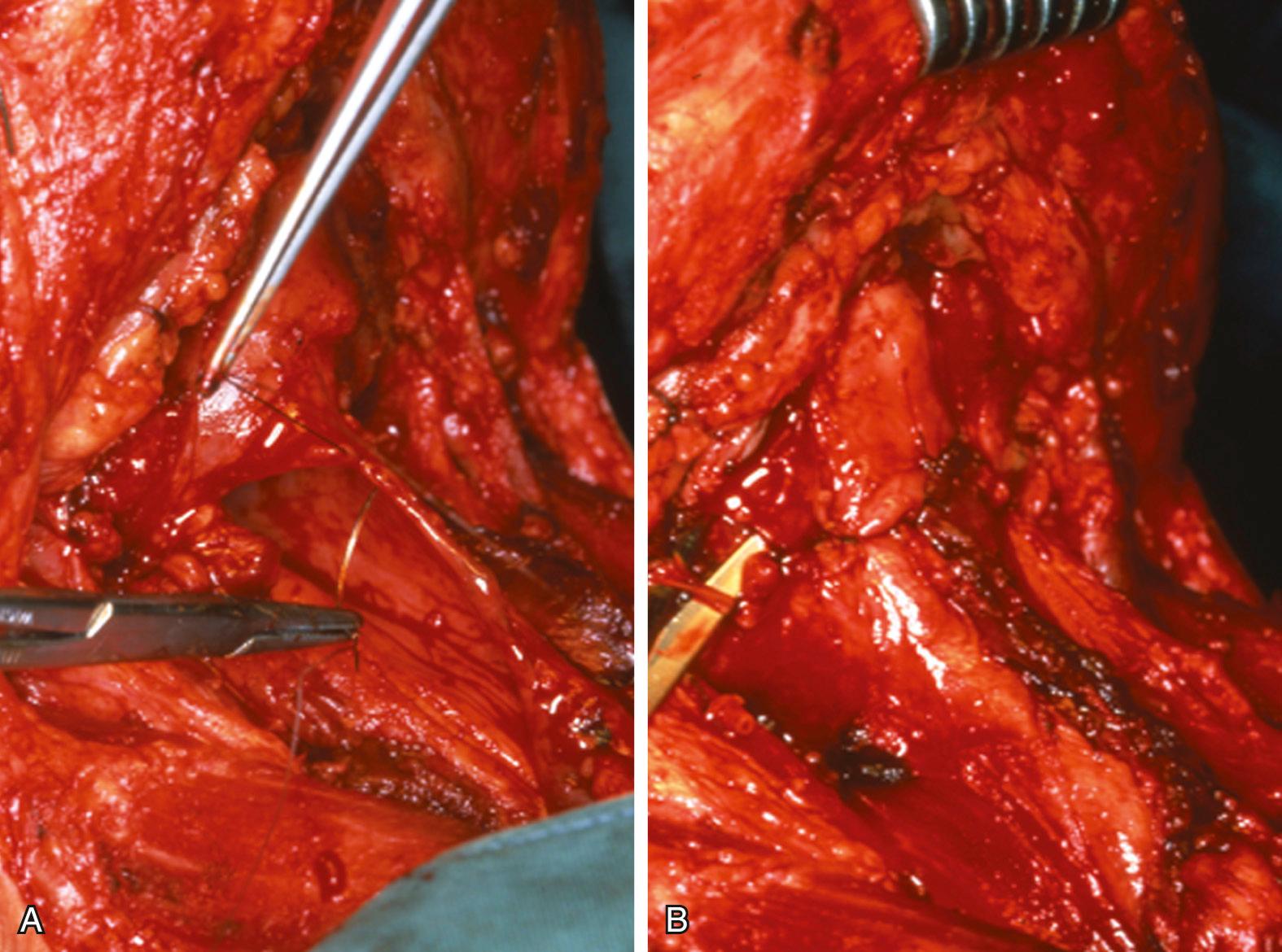
Postoperative management initially involves stoma care and nutritional intake through a feeding tube. Early removal of the tube, even as soon as the second postoperative day, and the commencement of a liquid oral diet seems feasible without an increased fistula rate. After 8 days, mostly a soft solid, but otherwise normal diet can be resumed.
Pulmonary care consists of the immediate postoperative application of an HME applied in a peristomal hydrocolloid adhesive and housing ( Fig. 111.15 ). The early use of an HME avoids noisy external humidifiers, while the patient easily adjusts to the breathing resistance of the HME, which is somewhat lower than the normal upper respiratory tract resistance. A randomized trial that compared usual care via an external heated humidifier with immediate application of an HME showed the validity of this relatively new concept. A case-control study in Toronto showed similar results. During the postoperative hospitalization period, phlegm production was significantly lower, as was the need to suction mucus from the trachea in the HME group. Moreover, significant reductions were seen in nursing time and daily costs, and compliance and satisfaction in both patients and nursing staff was significantly higher with HME use.
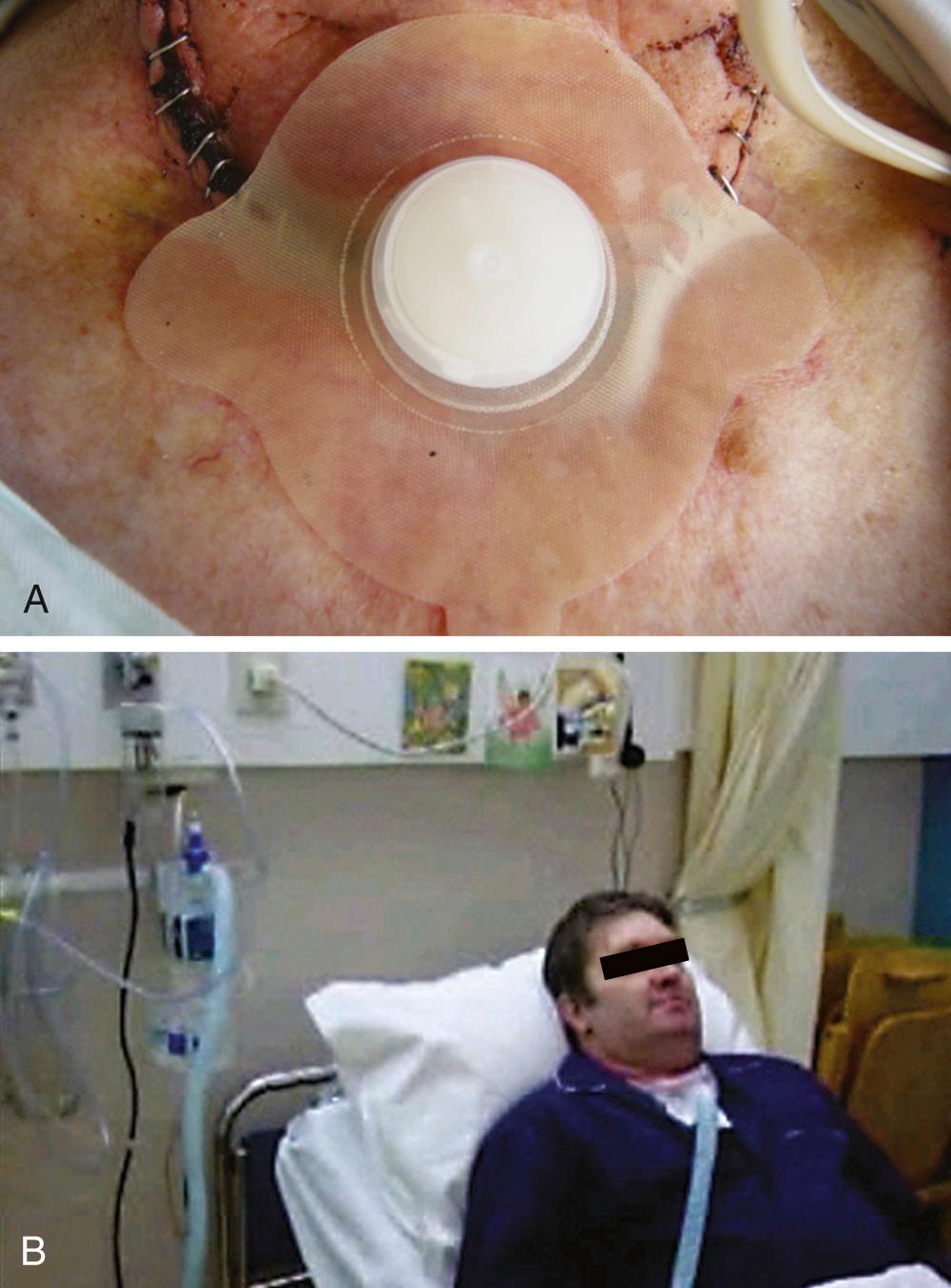
Secondary prosthetic voice rehabilitation with direct VP fitting is a simple endoscopic technique under antibiotic prophylaxis; in failed esophageal speakers, hypertonicity is more likely and might require additional treatment, such as chemodenervation with botulinum toxin or myotomy.
Several issues are noteworthy in relation to prevention of problems with secondary TEP and immediate VP fitting (also, in this case, the method of choice). If the patient is a failed esophageal speaker, there is a chance that the cause for this failure is hypertonicity of the PE segment. This means that the medical professional and the patient have to anticipate further treatment before optimal fluent voicing can be achieved (see section on secondary hypertonicity treatment). When using a standard rigid esophagoscope, with respect to the endoscopic technique, it is important to ensure the puncture is placed high in the trachea (not lower than 10 mm from the mucocutaneous border). This position eases the daily maintenance of the device—cleaning with a brush and/or flushing—by the patient and replacement by the medical professional in the outpatient clinic. Further, the puncture should be done with a sharp trocar, and preferably not with an incision by a scalpel, because this may result in a too-wide TEP tract. As for primary TEP, for secondary TEP the new disposable Seldinger-type TEP instrument has made the procedure easier and less traumatic ( ). As in primary TEP, the length of the prosthesis can still be mostly 8 mm, although somewhat more often, a 10-mm prosthesis has to be used; the thickness of the party wall can be judged quite well through palpation through the stoma onto the esophagoscope. Because the VP can be fitted immediately, patients can resume their oral diet right after the procedure and can commence voice and speech rehabilitation the same day. Note that in order to prevent local infection, as in all “clean-contaminated” head and neck surgery, during secondary TEP broad-spectrum antibiotic prophylaxis should be applied.
For the summary of the pros and cons of primary indwelling VP insertion, see Box 111.1 .
Tracheoesophageal puncture (TEP) with immediate retrograde voice prosthesis (VP) fitting stabilizes the tracheoesophageal party wall and diminishes the risk of its separation.
The tracheal and esophageal flange of the VP optimally protects against leakage of saliva and gastric fluids through the TEP tract.
The VP is less irritating for the tracheostoma and TEP than a feeding tube through this tract.
Postoperatively, unlike stenting the TEP with a feeding tube, a cannula and/or a heat and moisture exchanger are not impeded.
Patients can be familiarized early on with VP care by the nursing staff and other involved clinicians (speech-language pathologist, surgeon, etc.).
In the early postoperative phase, when the stoma is often still sore and the patient's mental and physical status is not yet optimal, unpleasant fitting and subsequently repeated resizing of the VP is avoided.
When voicing can start around the 10th postoperative day, immediate focus is on voicing itself and not on VP fitting, which psychologically is encouraging to the patient.
Postoperative radiotherapy is not contraindicated, and most patients have developed a useful voice prior to the start of radiation treatment.
The first VP replacement is usually months later, when wound healing is completed, surgical edema has subsided, and patients are generally in a better physical and mental state.
Speech-language pathologists keep in the lead in the multidisciplinary rehabilitation team, also with this approach.
The only relative disadvantage of early VP insertion is the need to use a nasogastric tube for feeding during the early postoperative period.
As with delayed VP fitting, a temporary deterioration of the voice will occur during the postoperative radiotherapy phase. The reassuring role of the speech-language pathologist is important here, because most patients can retain a useful voice, and the voice will regain its original quality in the majority of individuals. The advantage of being able to communicate using the restored voice through this difficult period of treatment outweighs any disadvantage related to its quality.
Become a Clinical Tree membership for Full access and enjoy Unlimited articles
If you are a member. Log in here